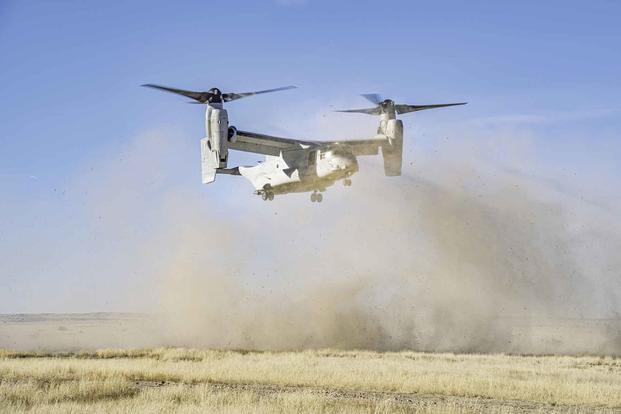A string of incidents involving V-22 Ospreys, including the crash off the coast of Japan last month that killed eight special operations airmen, is prompting a congressional investigation into the aircraft's safety and performance.
In a letter Thursday, House Oversight Committee Chairman James Comer, R-Ky., requested Defense Secretary Lloyd Austin turn over a slew of documents on the Osprey program, including safety records, maintenance logs, accident investigations, performance evaluations and more.
"It is crucial for the safety of our service members to ensure transparency, accountability and a thorough understanding of the steps DoD is taking to mitigate any further mechanical risks," Comer wrote in the letter.
Read Next: The US Wanted Out of the Middle East. The Middle East Had Other Ideas.
Comer gave Austin a Jan. 4 deadline to provide the documents to his committee.
The Oversight Committee's probe comes after what was the Air Force's deadliest Osprey crash to date. On Nov. 29, a CV-22B Osprey assigned to the 353rd Special Operations Wing went down into the ocean during a training mission off the shore of Yakushima Island, killing all eight crew members aboard.
After a preliminary investigation suggested the cause of the crash was a mechanical failure, the Air Force, Marines and Navy announced they were grounding their entire fleets of Ospreys to conduct maintenance and inspections. It's the first time all three services that fly the aircraft have grounded it at once.
The November crash was just the latest in a series of incidents and mechanical issues that has plagued the aircraft since its first flight in 1989. More than 60 service members have died in more than a dozen Osprey accidents since its first fatal crash in 1992, including 20 deaths just since 2022.
Last year, after the Air Force announced a surprise safety stand-down for the aircraft, the military services revealed they were aware of a mechanical issue known as a hard clutch engagement, or HCE, that had caused at least 15 known Osprey incidents between 2010 and 2022.
The underlying cause of the HCEs, which happen when the aircraft's clutches jam and shred internal components connected to the rotors, remains unknown.
Still, the military services have said they remain confident in the aircraft, which provides a unique capability with its tiltrotor technology that allows it to take off and land like a helicopter but fly at higher speeds like an airplane.
The aircraft's defenders also highlight a Marine Corps statistic that, for every 100,000 hours of flight, the Osprey has fewer mishaps than the F/A-18 Super Hornet, the F-35B Lightning II fighter jet, the CH-53E Super Stallion and other service aircraft. But that statistic doesn't account for what is believed to be the most common type of HCE incident, mishaps that are still costly and harrowing but that fall short of the top definition for incident reporting by the military that requires death, total destruction of the aircraft or more than $2.5 million in damages.
In his letter, Comer acknowledged the "significant advantages the Osprey can bring to combat" and that "statistically, the Osprey is not considered as dangerous as some other military aircraft."
But he also pointed to past watchdog reports on continued mechanical issues, the $120 million price tag to buy each Osprey, and the fact that most fatalities involving the aircraft have happened during training rather than combat, something he said his panel "remains alarmed" by.
"Given the gravity of the loss of service members' lives, increasing costs, and the future economic impact and innovative applications of Osprey program technology," he wrote, "the committee requests documents and information to shed light on aspects of the program's safety and performance."
Related: During Osprey Stand-Down, Some Forward Units Are Limiting Their Use in Operations













